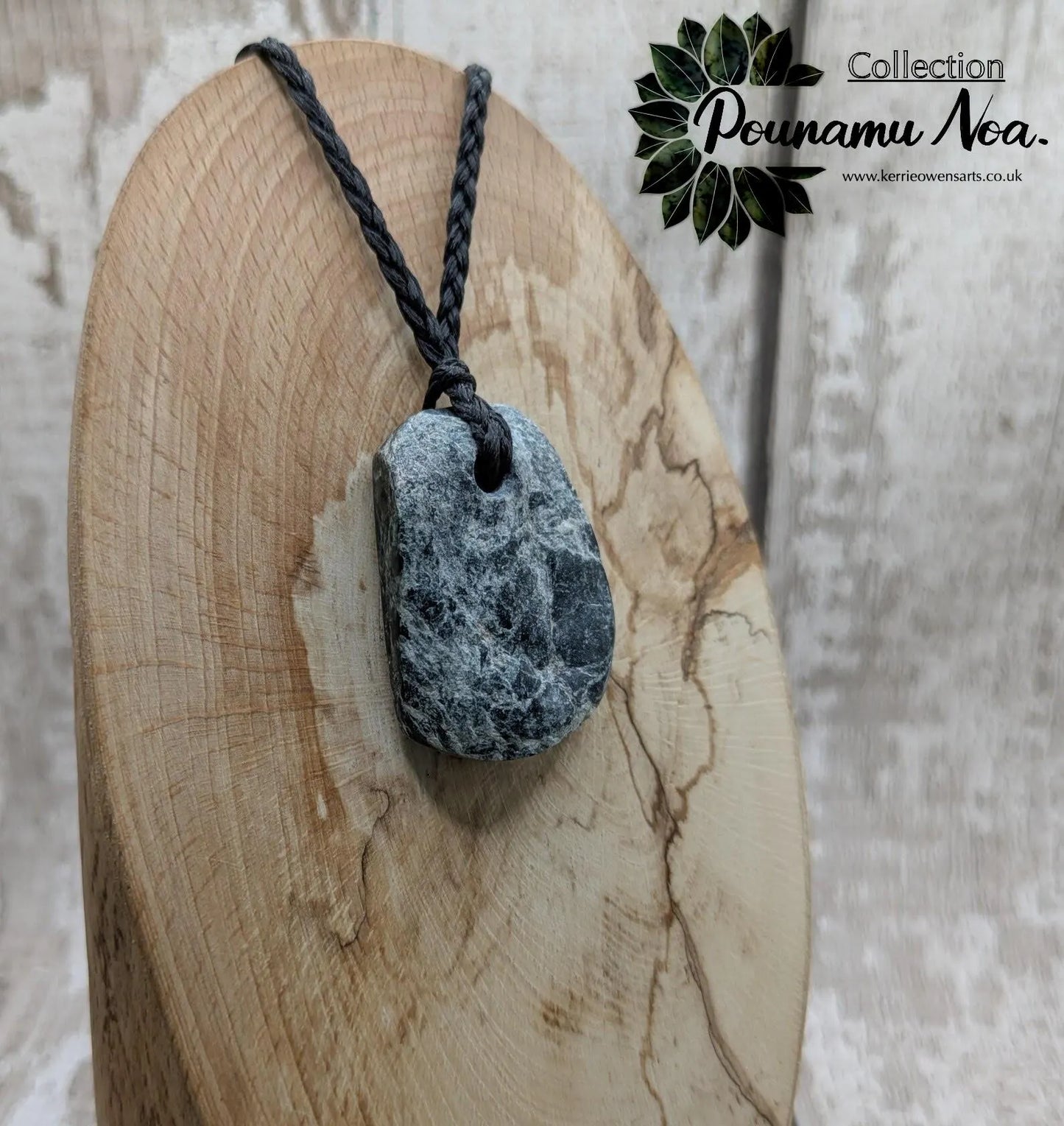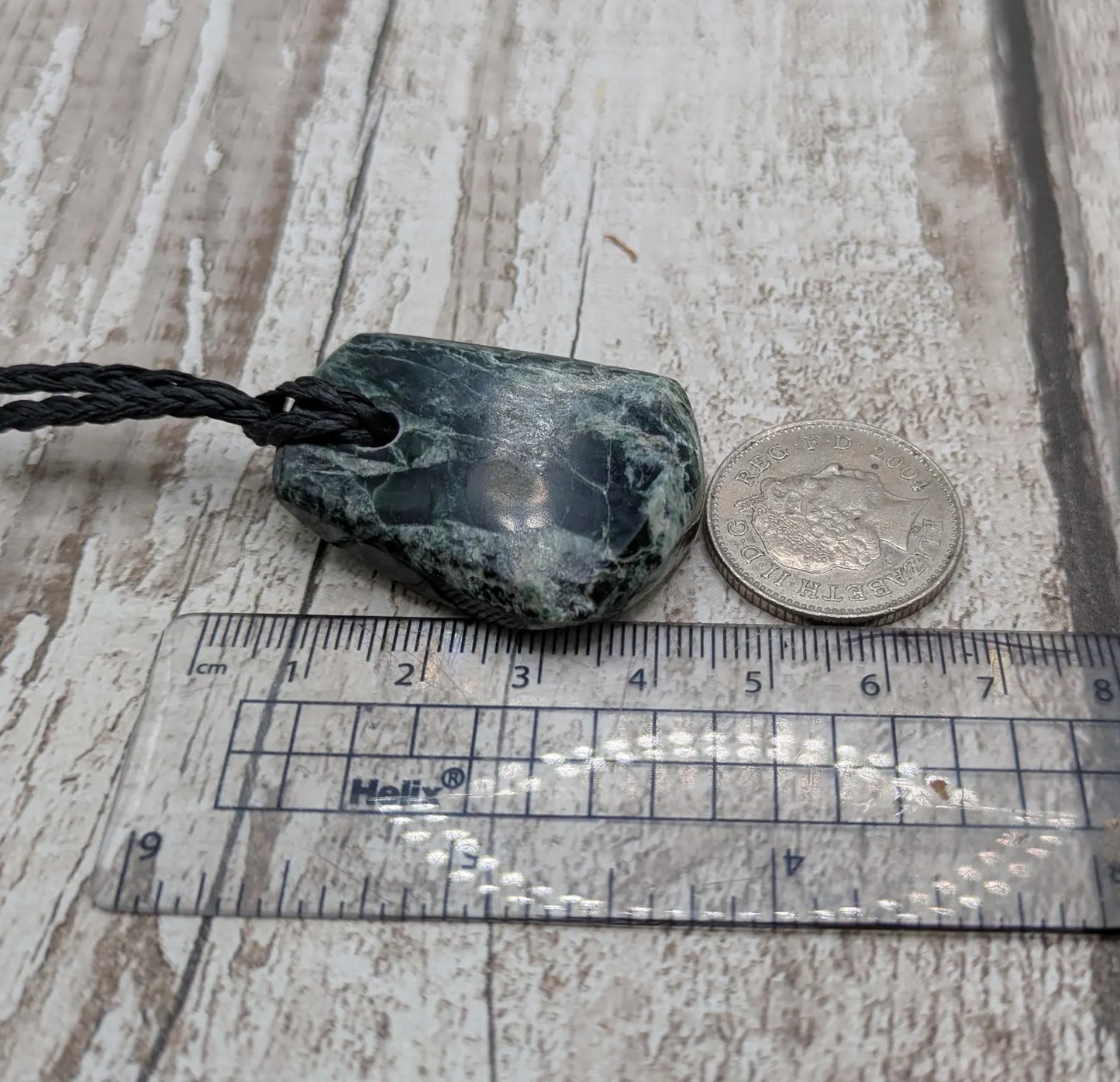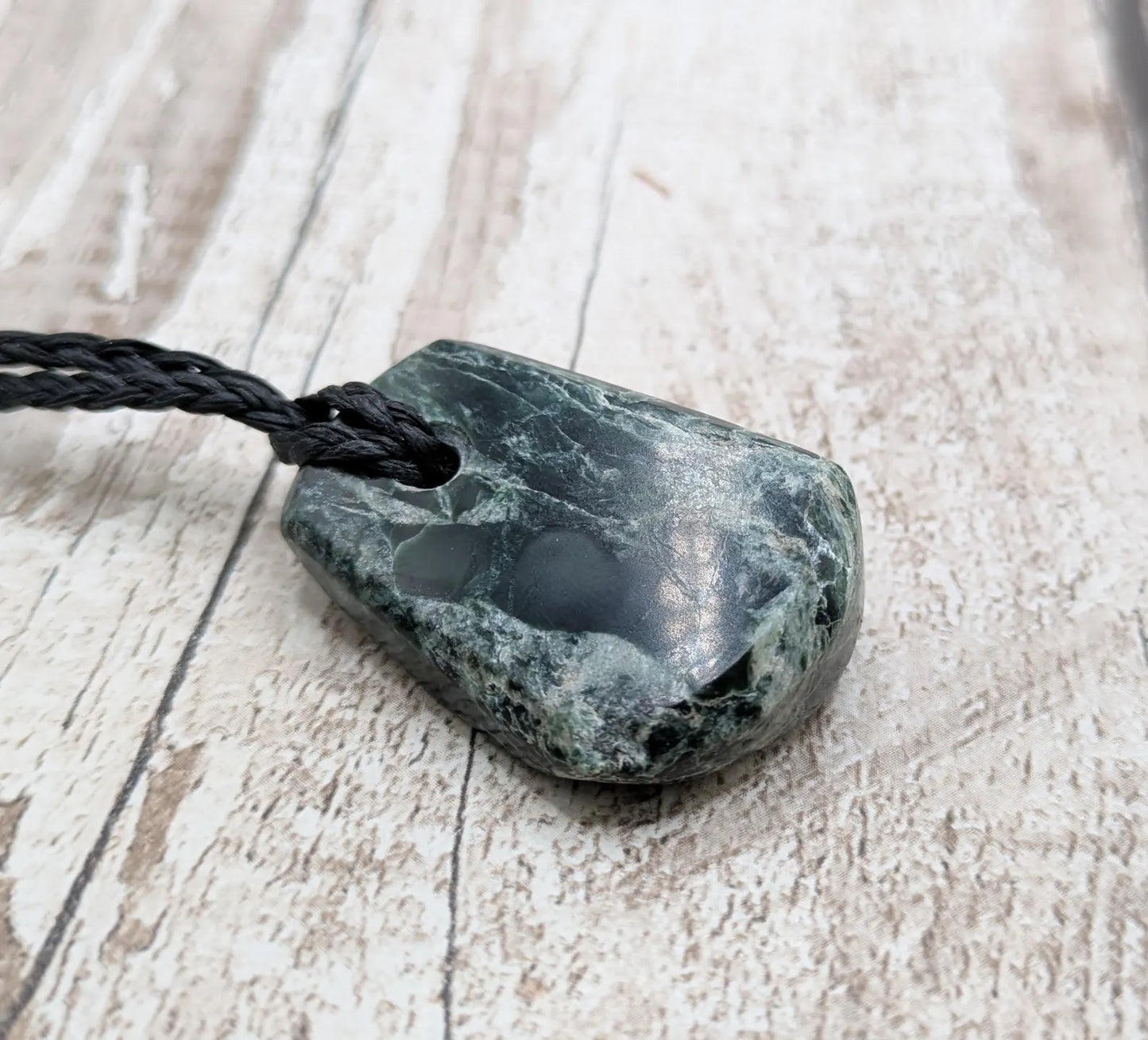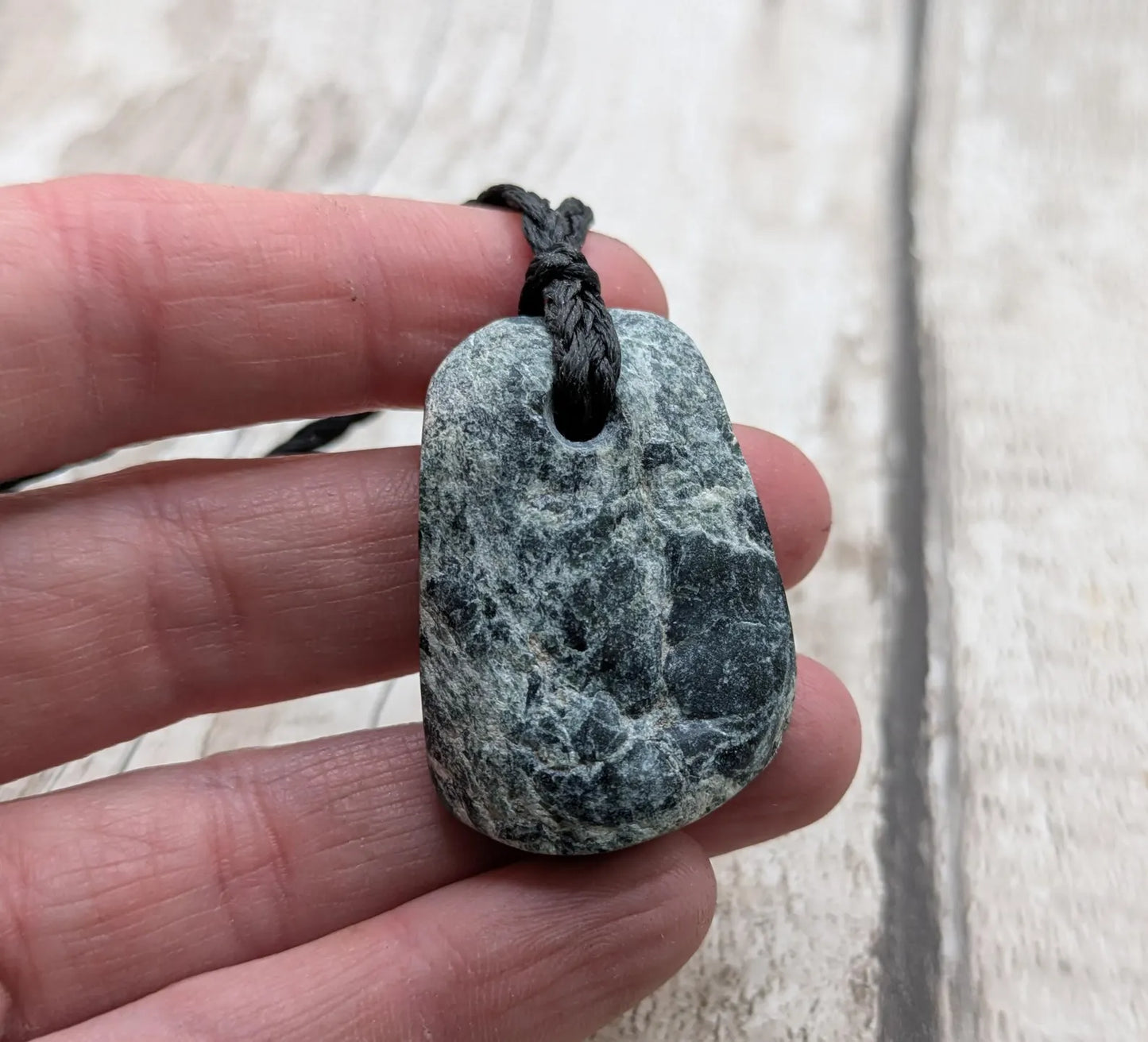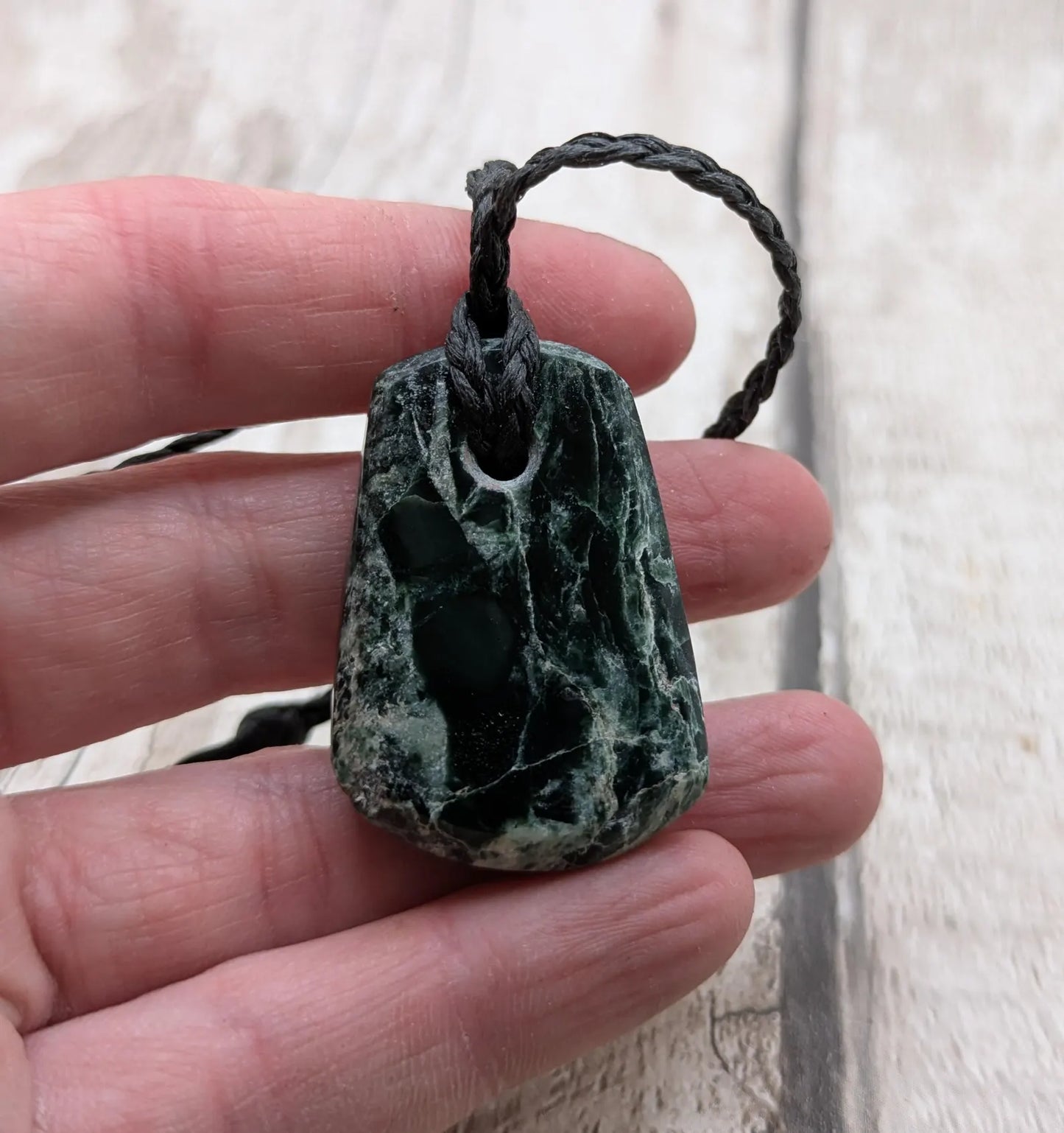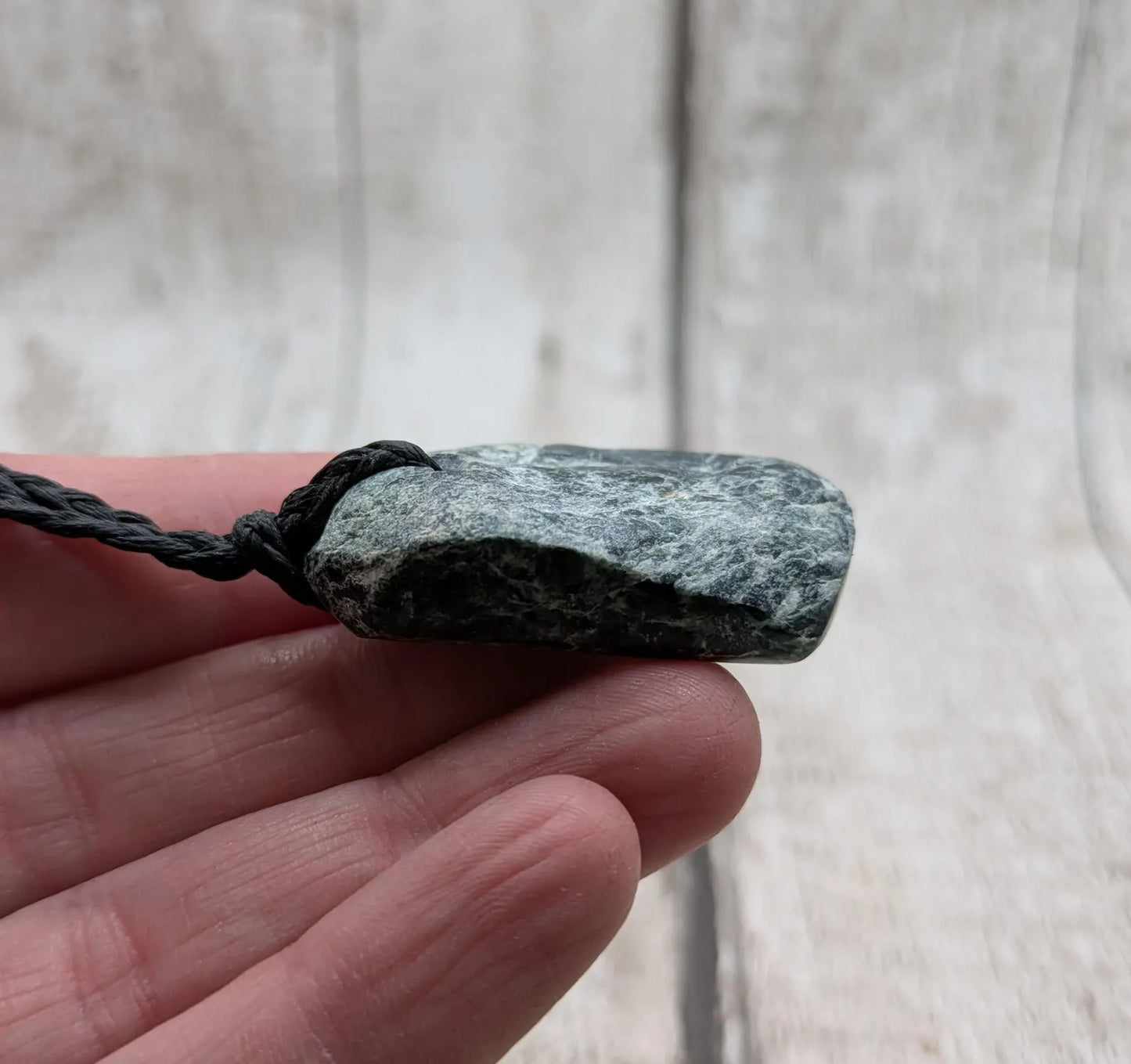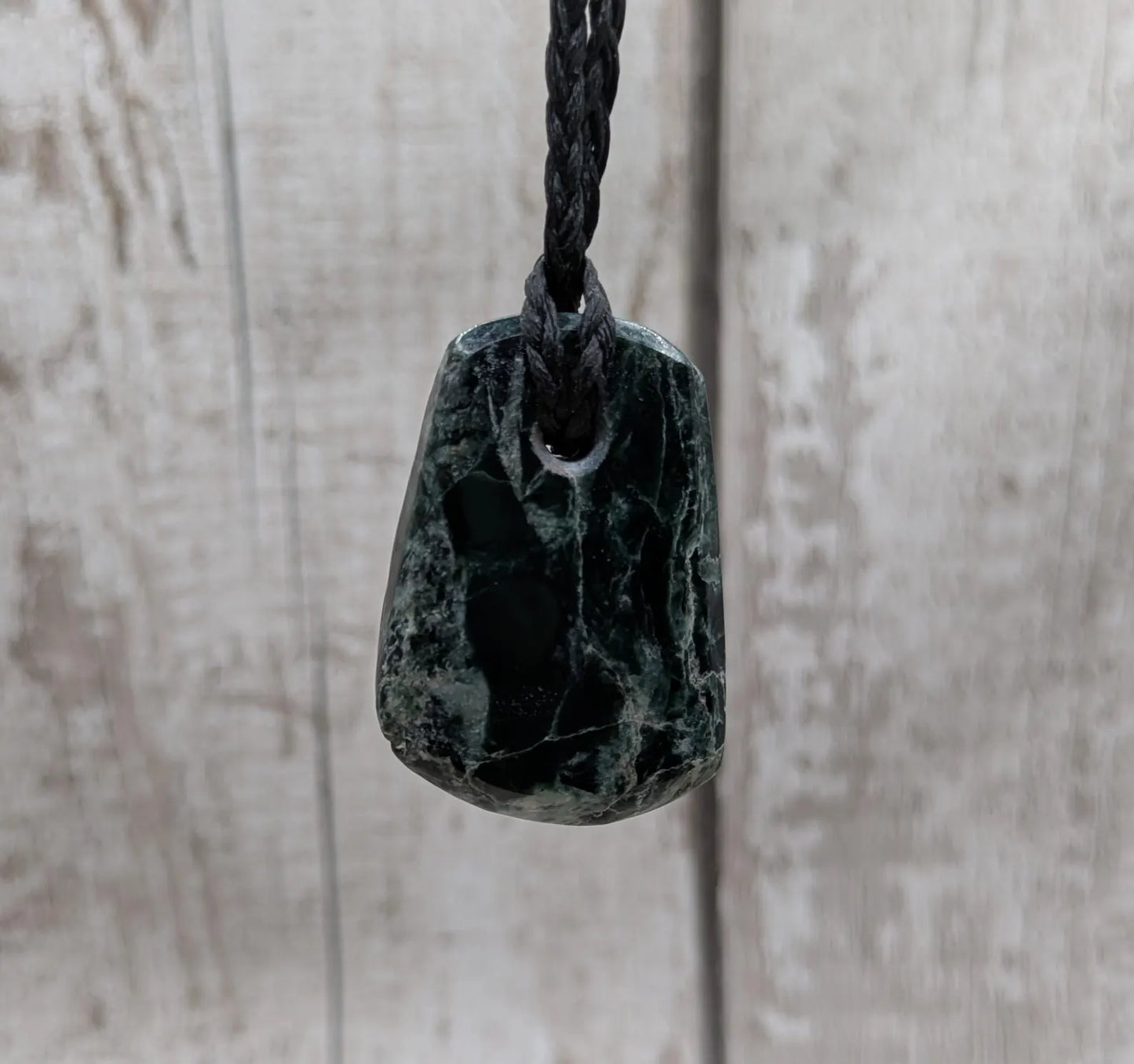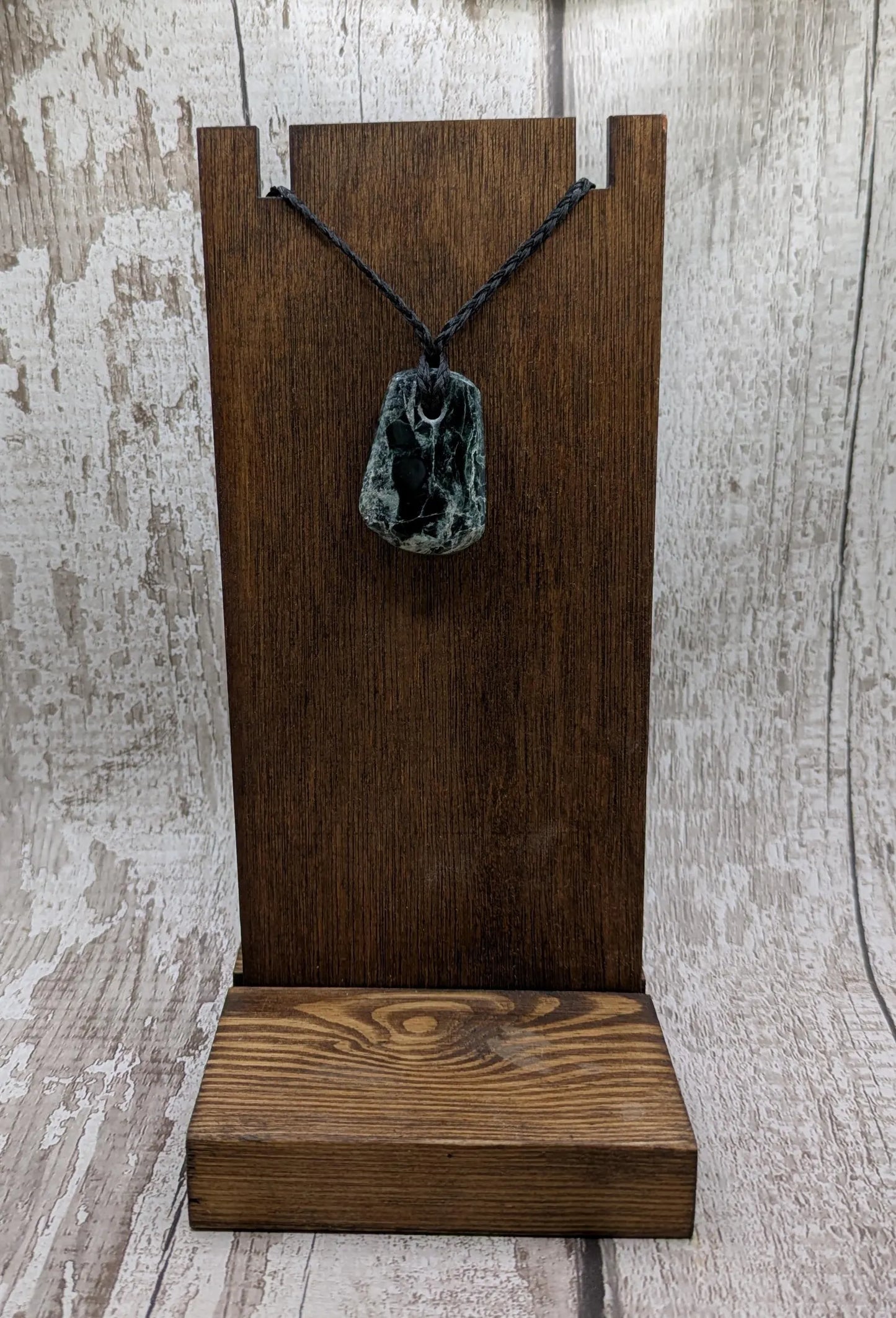Kerrie Owens Arts
New Zealand pounamu Jade pendant - Raw + Polished, Handcrafted Aotearoa Necklace, Spiritual & Cultural Jewellery.
New Zealand pounamu Jade pendant - Raw + Polished, Handcrafted Aotearoa Necklace, Spiritual & Cultural Jewellery.
Couldn't load pickup availability
Share
Raw & Polished Pounamu Pendant – Aotearoa Specimen Offcut
Crafted from reclaimed offcuts of genuine New Zealand Pounamu (jade), each of these one-of-a-kind pendants is a celebration of contrast: one side carefully polished to a soft shine, the other left raw and weathered, preserving the stone’s natural texture and untamed beauty. These pendants are not just jewellery—they are specimens, sacred remnants of the land, shaped by hand with deep respect for their origins.
The stone is gathered and worked within Aotearoa, always following cultural values and sourcing ethics. These offcuts were once cast aside, but now given new life as powerful statement pieces—symbols of renewal, transformation, and the quiet strength in imperfection.
Features:
Genuine New Zealand Pounamu (nephrite jade)
One side polished to reveal inner beauty, the other left raw to honour its natural state
Suspended on a hand-tied adjustable cord, ready to wear or gift
Perfect as a talisman, grounding tool, or collector’s pendant
Each one is absolutely unique—no two are ever the same
Spiritually Speaking: Pounamu is deeply revered in Māori culture—seen as a taonga (treasure), it holds mana and is passed down through generations. These pendants are ideal for those seeking grounding, strength, and a connection to Aotearoa’s land and spiritual rhythm. The polished side represents clarity and growth, while the raw side speaks to resilience, story, and the power of being unapologetically real.
Pounamu (New Zealand Greenstone) – Geological & Cultural Background
Chemical Composition & Mineral Type:
Pounamu is a term used in Aotearoa (New Zealand) to describe several types of nephrite jade, bowenite (a form of serpentine), and other similar stones. The most prized and commonly known form of Pounamu is nephrite jade, which has the chemical formula:
Ca₂(Mg,Fe)₅Si₈O₂₂(OH)₂
This places it within the amphibole group of minerals, specifically the actinolite-tremolite series. Its beautiful green coloration varies depending on the ratio of iron to magnesium—more iron creates a darker tone.
Geological Formation:
Pounamu is formed deep within the Earth’s crust under intense heat and pressure, as metamorphic rock. It originates in ophiolite belts—sections of oceanic crust and upper mantle that have been thrust up onto the continental crust. In New Zealand, this process occurred in the Southern Alps over 200 million years ago. The stones are often found in rivers or within schist deposits, having been weathered out of their host rock and carried downstream over time.
Texture & Durability:
Nephrite is incredibly tough due to its interlocking fibrous crystal structure—making it more resistant to fracturing than even steel. This unique toughness is why Māori traditionally used it for tools, weapons, and sacred items.
Cultural Significance & History:
To Māori, Pounamu is a taonga (treasure)—considered both spiritually significant and physically beautiful. It was used historically in tools and adornments but always with reverence. Items made from it were passed down generations as heirlooms, often named and considered part of the family’s lineage.
Pounamu is believed to carry mana—spiritual power—and is treated with deep respect. It’s given as a gift to mark important moments like births, milestones, or relationships, acting as both protection and connection. Its journey from stone to adornment is considered part of its story.
